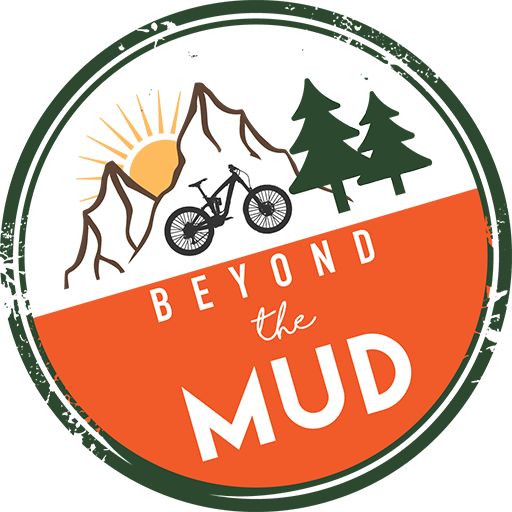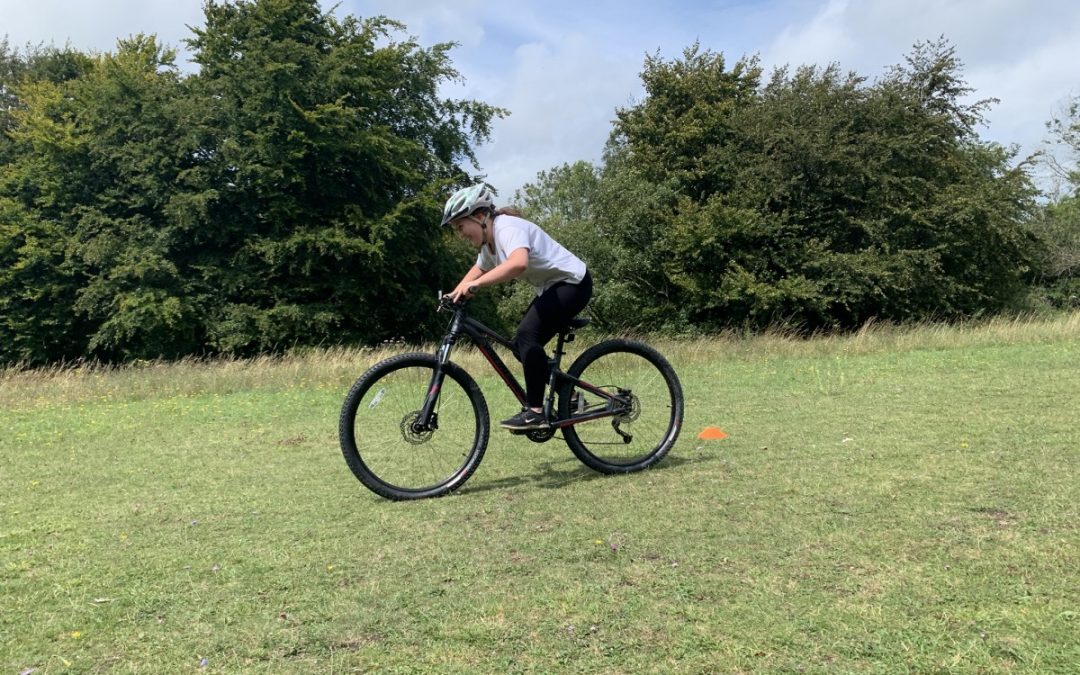Starting your mountain bike adventure

You don’t need mountains to go mountain biking. Any off-road trail can be an exciting adventure, a brilliant way of seeing our beautiful country, at the same time as getting fit.
Mountain biking is an exhilarating sport which everyone can enjoy. With some basic skills in your tool kit you can really make the most of your new-found hobby! Your position on the bike will make a big difference to how the bike handles and how you feel on the bike.
Mountain bike trail surfaces can include rocks, roots, ruts, sand or mud. The variable terrain and the obstacles are all part of the fun, but can be unnerving to beginners. Being in the right body position helps you get through tricky sections of trail.
The first thing you need to master is the ‘ready’ or ‘attack’ position.

This is the position you will use when going down singletrack trails to keep your feet out of the way of obstacles but also to allow the bike to move underneath you and grip the ground.
Ready position:
- Body weight:You want to stay centered over the bike laterally, but keep your weight shifted back over the rear wheel. (The steeper the descent, the further back you shift your weight).
- Bum:Off the saddle this allows the bike to move underneath you. Also creating a wider base for you to move around the bike than when you’re sitting down.
- Feet:Keep your pedals level, heels down pushing the pedals forward. This keeps your weight balanced and helps ensure you don’t catch a pedal on a rock.
- Arms and legs:Keep them loose – they’re your shock absorbers. Your knees and elbows should be bent. Staying relaxed and loose on the bike will also help you react quicker.
- Hands:Maintain a light grip on the handlebar, don’t tense through your shoulders. No death grip!
- Head and eyes:You should be looking down the trail at least 3 metres ahead so you can react to the changes in the trail.
- Fingers: Feathering your brakes with one finger, trying not to over brake in the corners.
Picking a Line:
The rougher the terrain, the more you have to let the bike float underneath you, this is where keeping in mind the points above and staying in the ready position will help you feel relaxed and comfortable on the bike. Your wheels will move in different directions as you hit bumps, and that’s OK. Just keep your body upright, relax your grip and keep the bike pointed down the trail.

Another key point is to look where you want to go, not at the things you want to avoid!
Pick the path of least resistance down the trail. The hazards you will need to watch out for will depend on your skill level. A log that will stop one cyclist may be a fun bunnyhop for another. Generally, look for loose rocks, deep sand, water, wet roots, logs and other trail users and animals.

Pick your line: scan ahead for hazards by looking about 3 – 7 metres down the trail. Then, move your eyes back toward your tire. Doing this up-and-back action allows your eyes to take in lots of information. Knowing hazards ahead of time can help you adjust your balance and pick a line around them.
Braking
Braking on a mountain bike should be a controlled and considered. Most of your control braking power comes from your front brake, but grabbing a handful of front brake will send you doing cartwheels. Instead, lightly feather the brakes, and do so evenly on the front and back brakes. Avoid sudden, fast squeezes to help prevent skidding.
When braking stay in the ready position. Move your hips back, drop your heels down and keep a slight bend in your knees and elbows.
When to Brake
When approaching a turn, brake before you hit the turn, and then let your momentum carry you through. This allows you to focus on your technique through the turn and exit the turn with speed. Then apply the brakes ready for the next trail obstacle.

Momentum is your friend when getting up and over obstacles on the trail. Keep your momentum and you will often roll over or off certain features easily, if in doubt stop and look at the feature before riding it.
I hope you have enjoyed this article on body position and braking for beginner mountain bikers. If you would like to improve your mountain biking, like with any sport, getting a coach can mean you improve quicker and don’t pick up so many bad habits.
Check out our coaching options here.

